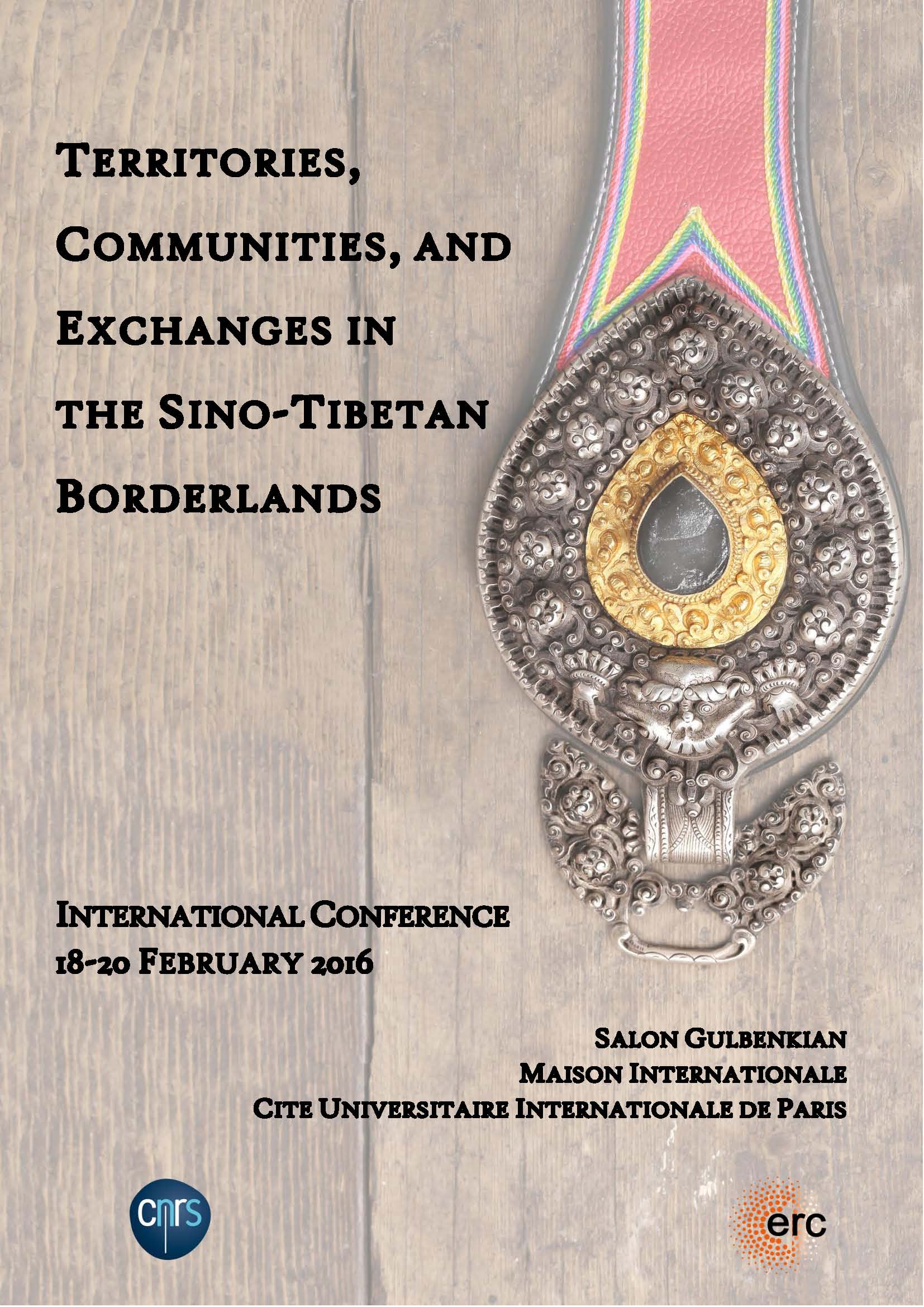Notice
Lucia Galli (University of Oxford), "The Price of Enlightenment: The Travel Account of Kha stag ʼDzam yag, a Pilgrim and a Tshong dpon (1944-1956)"
- document 1 document 2 document 3
- niveau 1 niveau 2 niveau 3
Descriptif
Frontier territories characterised by intense socio-economic, political, and cultural inter-actions, in the mid-nineteenth century the easternmost fringes of the Tibetan plateau saw the rise of the ris med movement, an influential religious approach fostering inclusiveness and non-sectarianism. Teachings, empowerments, and transmissions of various schools and lineages were actively sought and received, through a constant flow of masters, adepts, and pilgrims from one monastery to the other. Testimony to these thriving interactions was Kha stag 'Dzam yag, a Khams pa trader from a nomadic area in ‘Bri zla zal mo gangs and author of a travel account describing his thirteen-year long pilgrimage from eastern Tibet to Lha sa and gZhi ga rtse, and from there to northern India and Nepal. During his travels through the Tibetan plateau, the author visited monasteries and sacred sites belonging to different schools of Tibetan Buddhism, receiving blessings and instructions from masters of various religious lineages. The pious candor of his record reveals the inextricable bond between spiritual and mundane affairs, since the connection between a master and a disciple was based on a mutual giving and receiving. Whereas the first provided teachings and refuge, the latter was expected to repay his guru’s kindness through offerings and gifts.
Kha stag 'Dzam yag’s personal experiences as both a pilgrim and a trade agent for the Khang gsar bla brang of Ngor E wam chos ldan, a monastic community he had actively supported in the years preceding the 1950s, exemplify the intertwining of economics and religion and help to shed some light on the influence exerted by the monasteries of central Tibet on their branches in the sGa pa and sDe dge areas.
International conference “Territories, Communities, and Exchanges in the Sino-Tibetan Kham Borderlands,” Februray 18-20, 2016. This conference is an outcome of a collaborative ERC-funded research project (Starting grant no. 283870). For more information, please visit the project's Website: http://kham.cnrs.fr
Dans la même collection
-
John Bray, "French Catholic Missions and Sino-Tibetan Trade: Local Networks and International Enter…
The Missions Étrangères de Paris (MEP) sent their first missionary on an exploratory mission to the Sino-Tibetan borderlands in 1847, and they retained a presence in the region until 1952. Together
-
C. Pat Giersch (Wellesley College), "Patterns of Inclusion and Exclusion Along Twentieth-Century Ch…
In recent years, increasingly sophisticated work has traced the remarkable changes in early twentieth-century state-building along China's southwestern and Tibetan borderlands. During this same period
-
Yudru Tsomu (Sichuan University), " Rise of a Political Strongman in Dergé in the Early Twentieth C…
This paper discuses rivalry for the throne of Dergé between 1890 and 1940. In the late nineteenth and early twentieth centuries, internecine feuds created a power vacuum serious enough to invite
-
Mark Frank, " Chinese Physiocracy: Kham as Laboratory for the Agrarian Theory of China "
When a nation-state looks to intensive agriculture for its national essence, what are the implications at the local level? This paper looks at agricultural colonization efforts (tunken屯垦) of the
-
Stéphane Gros (Centre National de la Recherche Scientifique), "Matrifocality and the House in Drapa…
GrosStéphaneThe practice of a non-contractual, nonobligatory, and nonexclusive visiting sexual system among a matrilineal group in Southwest China has generated as much interest in anthropology as in the mass
-
Chen Bo (Sichuan University), “House Society” Revisited "
In this paper, I will begin by considering the concept of “house society” and its applicability to Southwest China. I ask the question of why no scholar, Levi-Strauss included since he originally
-
Eric Mortensen (Guilford College)," Boundaries of the Borderlands : Mapping Gyalthang"
This project seeks to discern the physical and conceptual boundaries of the Tibetan region of Gyalthang, in southern Kham. At issue are questions about the relationships between older
-
Fabienne Jagou, " Manchu Officials’ Khams Travel Accounts: Mapping a Course Through a Qing Territor…
Throughout the Qing dynasty (1644-1911), more and more travelers –officials, military and merchants- went to the Southwest border of China and dedicated some of their time to writing travel accounts,
-
Isabelle Henrion Dourcy (University of Laval), "Making Movies in the Gesar Heartland: The Burgeonin…
This conference is an outcome of the collaborative ERC-funded research project “Territories, Communities, and Exchanges in the Sino-Tibetan Kham Borderlands” This research project focuses on the
-
Elizabeth Reynolds (Columbia University), " Monasteries, Merchants, and Long Distance Trade: The Ec…
Pre-1959 Tibet was not a “closed off land” as is often assumed, but a place of dynamic economic structures and a diverse body of economic actors. The Trehor region, an area located in modern day
-
Tenzin Jinba (National University of Singapore), " Two Gyalrong Weddings Under Fire: Rethinking of …
Two weddings in 2009 and 2015 respectively have received wide publicity among Tibetans and others within and out of China. The first was that of Lobsang Dundrup, a renowned singer from Gyalrong, and
-
Katia Buffetrille (Ecole Pratique des Hautes Etudes), " The Increasing Visibility of the Borderland…
For centuries, Central Tibet and its capital Lhasa were regarded as the center—as is obviously expressed in the very name of the region in Tibetan, dBus, “Center”—of political and religious life in













